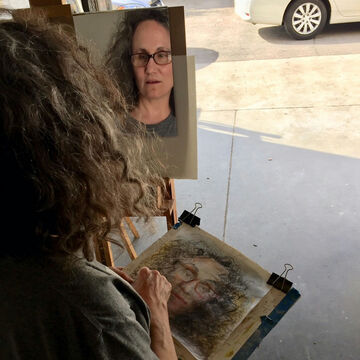

Anne Harris
Associate Professor
Contact
Bio
Anne Harris’s paintings and drawings have been exhibited at museums such as the National Portrait Gallery at the Smithsonian Institute, The Portland Museum of Art and the deCordova Museum; and at galleries such as Alexandre Gallery and DC Moore Gallery (NYC), Corbett vs. Dempsey and Goldfinch (Chicago), Serious Topics (Los Angeles), Ivory Gate (Shanghai, China) and Espacio Andrea Brunson (Santiago, Chile). Her work is in such public collections as The Fogg Museum at Harvard, The Yale University Art Gallery and The New York Public Library. Grants and awards received include a Guggenheim Foundation Fellowship, an NEA Individual Artists Fellowship and an Honorary Doctorate of Fine Arts from Lyme Academy College of Art.